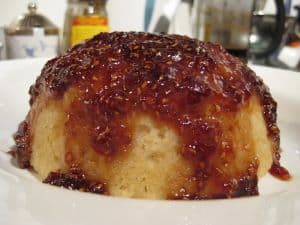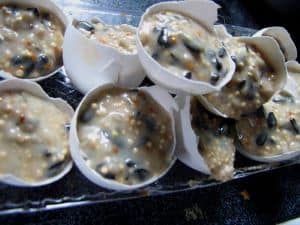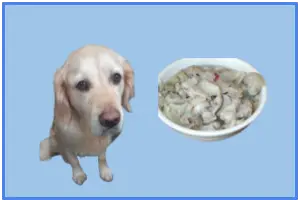
I’m going to let you in on a little secret about me. I am what I call a homemade foodie.
That means that I love to try new foods, but even more that I love to cook them at home.
This means I am often experimenting with new ingredients in my meals.
One of the most recent ingredients that I have been experimenting with is suet.
There is something else about me you probably already know.
I love sharing my food with my fur babies.
But, as a responsible “parent” I am also very careful to make sure anything that I give my pups is safe for them to eat.
Therefore, before I start sharing my latest creations with them, I always take a little time to research and make sure it won’t have any ill effects on my four-legged foodies.
What is Suet?
Now, you may ask yourself, like I did when I first heard about it, what is suet?
Suet is the raw, hard fat of beef, lambs or mutton that is found around the loins and the kidney.
If you were to look at suet, it just looks like little balls of fat.
I don’t know anyone that eats suet like that, instead it is often boiled down into what is called tallow.
Suet is often used in deep frying or as a butter substitute in pastries.
Many of the recipes that include suet come from the United Kingdom, or surrounding area, like dumplings, haggis and mincemeat.
There is another very common use for suet that dog owners should know, for feeding birds.
Some birds like woodpeckers, goldfinches, bluebirds and more enjoy suet with their bird seed. A small ball of suet is rolled in the birdseed and placed in the bird feeder.
The birds will eat the bird seed and suet. It is also good to be aware of things that can be in our dog’s environments, and to try to make them as safe as possible.
A Brief History of Suet
Suet has been around for a long, long time. As a traditional ingredient in Christmas pudding, it may have been used since the early 1400s!
The earliest discovered recipe listing suet as an ingredient is for English College Pudding. This pudding has been served to Oxford and Cambridge students since 1617!
Traditionally, people would purchase suet from their butcher, at the same time they purchased their meats.
They would then go home and either boil the raw suet down into what is called tallow, or shave it into small pieces depending on their recipes.
Today suet can be found in many grocery stores, where suet is commonly used in recipes. If you are like me, trying new recipes that aren’t from your region, the best place to buy it is online.
Three types of suet
When we look at sharing with our furry best friends, we always want to make sure that the food is safe for them to eat.
One aspect of this often includes checking the ingredients in that food.
This is especially true when it comes to food that we purchased.
Different brands may have different amounts of sugar or preservatives that could be harmful to dogs.
When it comes to your basic suet, there is only one real ingredient, fat.
Animals, like beef, lamb and mutton, have stores of fat on their body.
The most basic form of suet comes straight off the animal, with nothing being added to it.
In today’s world, most people don’t get their suet from the butcher, instead buying it at the store or online.
This is where it comes into play that some types might have different ingredients.
Animal suet
Atola is one of the most popular brands of suet that I have found online.
While its key ingredient is fat (beef, lamb or mutton depending on type) it also contains wheat and flour.
While none of this is toxic to dogs, it is important to double check, better safe than sorry.
Vegetable suet
There is another kind of suet that has started to become popular in recent years, vegetarian suet.
Just like the more traditional meat based suet, Atola is probably the most popular brand of vegetable based suet.
A close look at the ingredients reveals that instead of using animal fat, they use vegetable oil as a replacement.
Vegetable based suet also contains wheat and flour.
Again, nothing that would be harmful to dogs.
Suet balls and cakes for birds

Now, for the sake of keeping things clear, we are going to look at a “third” kind of suet and this one is for the birds.
Ok, that was a really terrible pun, but it is very important to address the suet that is used in bird feeders.
While the actual suet used is not any different from the suet used in recipes, it’s the addition of bird seed that needs to be addressed.
If your dogs ingest a couple pieces of bird seed, they are unlikely to have any issues.
It is best to monitor them and try to make an appointment with your vet soon for a checkup.
But what if they ingest A LOT of bird seed? Like, if a ball of suet covered in bird seed falls from the feeder and, because it smells delicious, they eat the whole thing?
I don’t want to alarm you, but this is a very dangerous situation.
Large amounts of bird seed can become lodged in a dog’s intestine, sometimes clogging it up completely.
Worse, bird seed can actually ferment in their stomach! This can lead to bloating and even Gastric Dilation Volvulus (GVD).
Gastric Dilation Volvulus is a life-threatening condition that needs to be addressed by your vet immediately.
It is good practice to keep bird seed, and therefore any suet for birds, well away from your dogs.
To be honest, I would recommend not even having it in the house. Dogs often get into mischief and I practice better safe than sorry.
So, can dogs eat Suet?
The answer to this question is yes and no.
The quick answer is that yes, technically dogs can ingest small amounts of suet without issue.
Think about bones that you might give your dog (making sure they are safe first), many of them have remnants of fat dried and left on for them to gnaw off.
A tiny amount of fat will not have a negative effect on their system.
This is also true when using suet in cooking.
If your dog does not have problems with other baked or fried foods, they are unlikely to have problems with foods cooked using suet.
We should address some long term-health issues that our dogs can face though. Like humans, dog’s bodies will store extra fat as stored energy.
Also like humans, too much of that stored energy can have negative health effects, like clogged arteries and pancreatitis.
So, just like humans, we want to monitor how much fat our fur babies are consuming over time.
It’s also important to make sure that we keep large amounts of suet away from our dogs. As I said earlier, they have habits of getting into mischief. If they have access to it, they are likely to eat the whole thing, like a stick of butter on the counter. If they can reach it they will eat it. Should your dog ingest a sizable amount of suet or any other high fat food, they can experience stomach pains, cramps and even bloating. While they are unlikely to have any long-term health problems, it’s best to get them to the vet as quickly as possible to make sure they will be ok, or to help them pass what they ate.
Conclusion
As I get ready to tackle my first homemade mincemeat pie, I am glad to know that I can share a little of it with my tail wagging buddies. Even though I know that the suet in the recipe will not cause them any problems, I still plan to limit just how much I give them. I want to make sure they can enjoy the treat, but also maintain good health so they can enjoy many more of my experiments in the future. I know I need to make sure that I keep my extra suet clear of those mischievous noses with their enhanced smell and make sure that my yard is clear of any bird seed that can harm them. I am a firm believer that making sure what we share with our fur babies is one of the best ways we can show that we love them (and lots of pets too). That’s why I always do my research to find what is safe to share with them, and why I share it with you and your fur babies.





